Communications of the ACM
400 Years of Mechanical Calculating Machines

Germany is celebrating the 400th birthday of Schickard's "calculating clock" In 1623, 400 years ago, Wilhelm Schickard (Tübingen) built the first known mechanical calculating machine. In the 17th century, other such devices appeared in Europe. They were made by Pascal, Leibniz, Morland, and Schott. However, usable mechanical calculating machines were not produced in quantity until the middle of the 19th century. Digital calculating aids already existed with the Romans. They used the hand abacus.
No original of Schickard's calculating machine has survived, but there are numerous replicas, see Figure 1. It is an addition and subtraction machine coupled with a multiplication and division device.
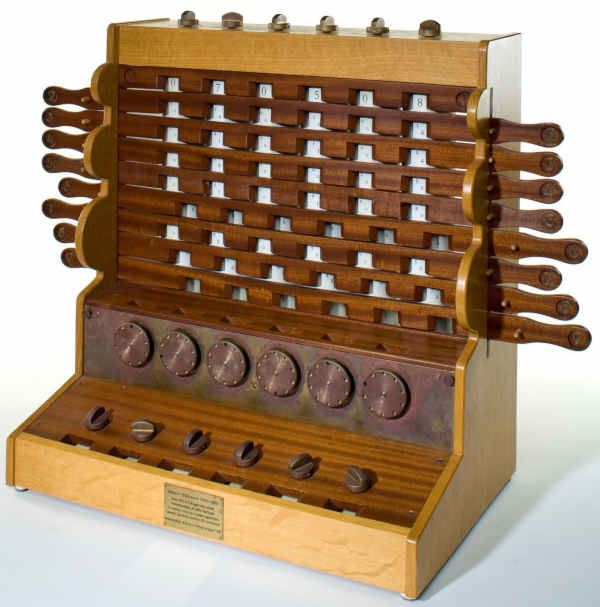
Figure 1. Schickard's calculating clock (1623).
The "calculating clock" of Wilhelm Schickard is considered to be the first mechanical calculating machine. It comprises two separate sections, an arithmetic unit for addition and subtraction (below) and cylinders for multiplication and division (above) that function similarly to Napier's bones. The six rotating knobs (at the top) serve for inputting up to 6-place multiplicands. The six (vertically mounted) dials (below) acquire the values for the addition and subtraction mechanism. The numerals are represented by counter wheels.
Credit: Deutsches Technikmuseum, Berlin
Schickard probably relied on the findings of John Napier (Scotland); Kaspar Schott's calculating box works similarly, see Figure 2.
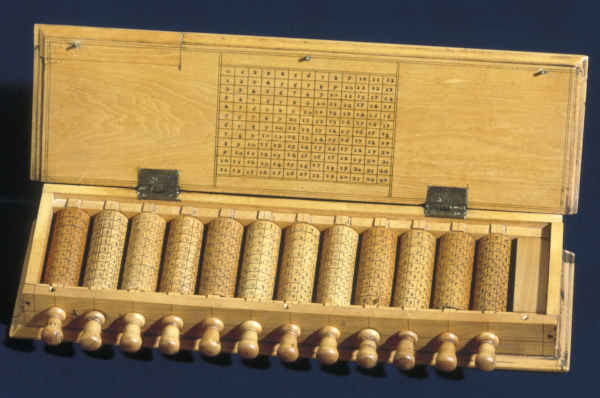
Figure 2. Schott's calculating box (1668).
The German Kaspar Schott transformed Napier's bones into 12 rotatable cylinders that include multiplication tables with the numerals1 to 9 and thus build upon the Pythagorean table. This instrument also enables division and extracting roots. The device is a replica.
Credit: Science Museum, London/Science & Society Picture Library
The Pascaline, an invention of Blaise Pascal (France, 1642), mastered addition and subtraction, see Figure 3. Eight copies are preserved.
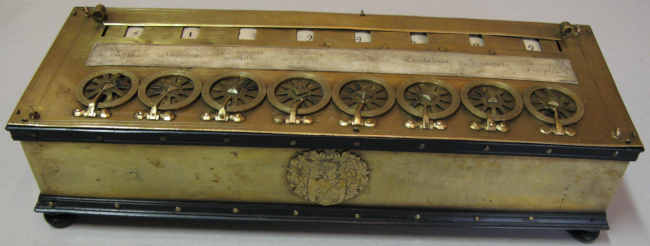
Figure 3. Pascaline (original).
Eight-place machine for Marguerite Périer
Credit: Nathalie Vidal/Muséum Henri-Lecoq, Ville de Clermont-Ferrand
Gottfried Wilhelm Leibniz (Germany) created a four-species machine in 1673, see Figure 4.
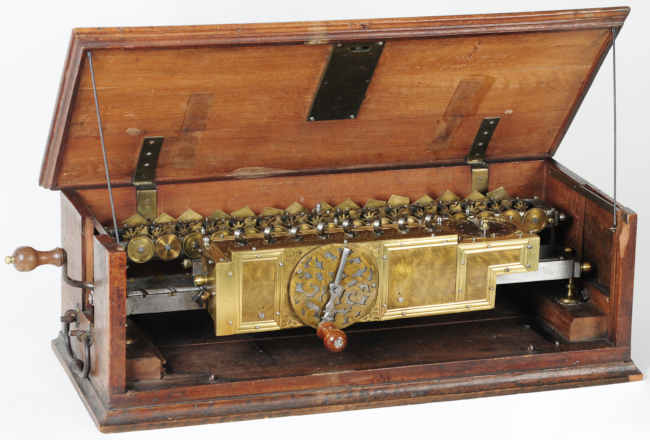
Figure 4. Leibniz's calculating machine (around 1694).
Only a single calculating machine of Gottfried Wilhelm Leibniz has survived. The (lockable) stepped drum construction is viewed as the first four-function machine. The implementation of the tens carry proved to be difficult.
Credit: Gottfried-Wilhelm-Leibniz-Bibliothek – Niedersächsische Landesbibliothek, Hanover
In 1664, Samuel Morland (England) built a multiplying and dividing machine, see Figure 5. In 1666, he created an adding machine, see Figure 6.
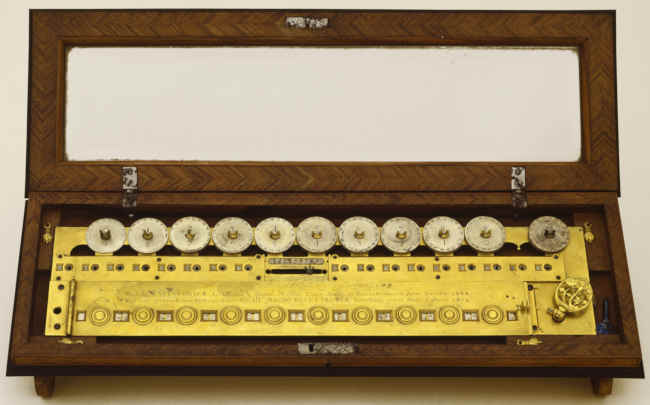
Figure 5. Morland's calculating machine (1664).
This 10-place device of Samuel Morland is suitable for multiplication and division. At the top are the numeral discs (circular dials) of the setting mechanism (Napierian cylinders) and at the bottom the 11 display windows of the calculating unit. In the middle is the mechanical memory.
Credit: Museo Galileo, Florence
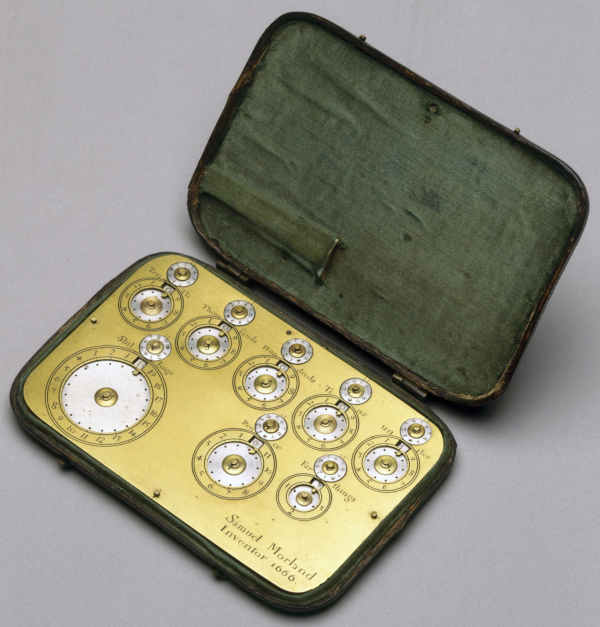
Figure 6. Morland's cogged disc addition device (1666).
Together with Schickard, Pascal, and Leibniz, Samuel Morland belongs to the few builders of calculating aids of the seventeenth century. The case is of leather.
Credit: Science Museum, London/Science & society picture library
However, it took another 200 years before usable calculating machines were available. From 1850, the arithmometer was mass-produced by Charles-Xavier Thomas (France), see Figure 7.
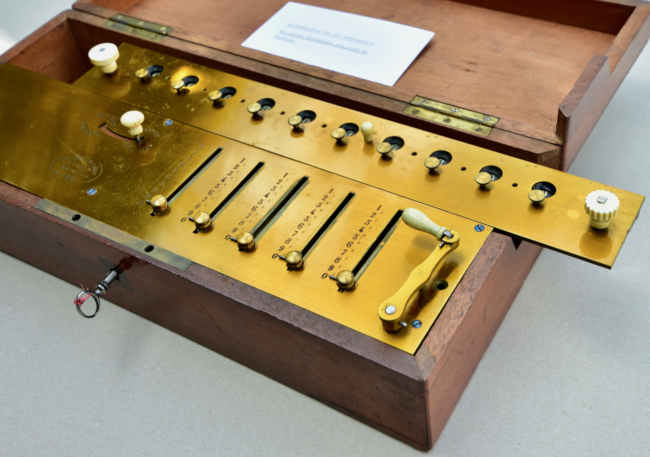
Figure 7. The Thomas arithmometer.
The carriage is movable and can be shifted to the right or left by one decimal place.
Credit: Mark Kohler/Schulmuseum Bern
The oldest calculating tools are as old as mankind, the fingers. Even the ancient Romans used pocket calculators, the hand abacus, see Figure 8. Very few originals have survived.
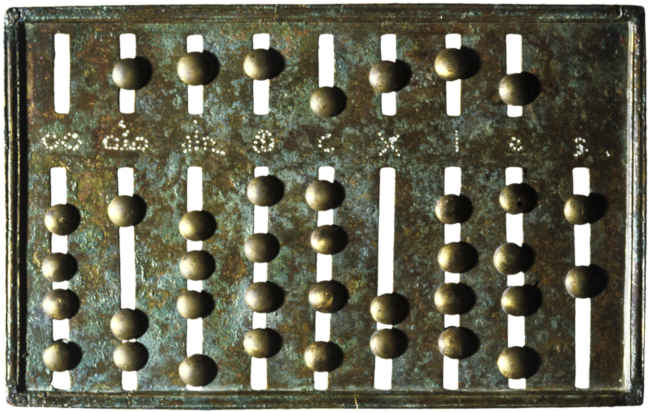
Figure 8. Front side of a Roman abacus, Rome (original).
This pocket calculator is made of bronze. The slot at the far right consists of a single piece.
Credit: Museo nazionale romano, Palazzo Massimo alle Terme, Rome
All the devices mentioned above are digital calculators.
The first known analog computer is the mechanism of Antikythera, an astronomical calculating machine from Greece. The most widespread analog calculators were the slide rules. They were invented in 1622 by William Oughtred (England). Sectors and proportional compasses are even older. They appeared in the 16th century.
References
Bruderer, Herbert: Meilensteine der Rechentechnik, De Gruyter Oldenbourg, Berlin/Boston, 3. Auflage 2020, Band 1, 970 Seiten, 577 Abbildungen, 114 Tabellen, https://www.degruyter.com/view/title/567028?rskey=xoRERF&result=7
Bruderer, Herbert: Meilensteine der Rechentechnik, De Gruyter Oldenbourg, Berlin/Boston, 3. Auflage 2020, Band 2, 1055 Seiten, 138 Abbildungen, 37 Tabellen, https://www.degruyter.com/view/title/567221?rskey=A8Y4Gb&result=4
Bruderer, Herbert: Milestones in Analog and Digital Computing, Springer Nature Switzerland AG, Cham, 3rd edition 2020, 2 volumes, 2113 pages, 715 illustrations, 151 tables, translated from the German by John McMinn, https://www.springer.com/de/book/9783030409739
Herbert Bruderer ([email protected]; [email protected]) is a retired lecturer in the Department of Computer Science at ETH Zurich and a historian of technology.
No entries found